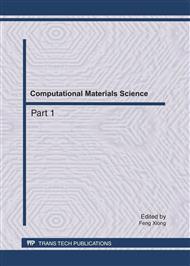[1]
Feng dongqin, Ma shulei. Analysis and Design of the Fuzzy Controller with Parameters Feedback for a kind of non-linearity and time-varying system, Information and Control, vol. 31, no. 4, 2002, pp.310-314.
Google Scholar
[2]
Feng dongqin, Ma shulei Control Strategy and Algorithm of Feed forward Intelligent Control for a kind of Non-linearity and Time-varying System, Information and Control, vol. 33, no. 1, 2004, pp.9-12.
Google Scholar
[3]
Chen ming. Optimal Computing based on Evolutionary Genetic Algorithm, Software Transaction, vol 9, no. 11, 1998, pp.876-879.
Google Scholar
[4]
Chen guoliang, Wang xufa. Genetic Algorithm and Application, The Publishing of Post and Telecommunications of People, Beijing, China, (1996).
Google Scholar
[5]
Chen shanben, Wu lin, Self-learning Control Method of Artificial Network for the Uncertain Object. Automatic Transaction, vol. 23, no. 1, pp.112-115.
Google Scholar
[6]
R. Caponetto. L. Fortuna, Soft computing for greenhouse climate control, IEEE Trans on Fuzzy Systems, vol. 8, no. 6, 2000, pp.753-760.
DOI: 10.1109/91.890333
Google Scholar
[7]
S.V. Wong, A.M.S. Hamouda, Optimization of fuzzy rules design using genetic algorithm, Advances in Engineering Software, 2000, pp.251-262.
DOI: 10.1016/s0965-9978(99)00054-x
Google Scholar
[8]
Zhou ming, Sun shudong, The Principal and Application of the Genetic Algorithm, The Publishing of Chemical Industry, Beijing, China, (1999).
Google Scholar
[9]
H M Yuan, Genetic algorithm with adaptive probabilities of crossover and mutation, J of Capital Teacher Univ, vol. 21. no. 3, 2002, pp.14-20.
Google Scholar
[10]
Lu jingui, Li qian., The Engineering Application and Principal of the Genetic Algorithm, The Publishing of the University of China Mining Industry, Beijing, China, (1997).
Google Scholar
[11]
M Srinivas. L M Patnaik, Adaptive probabilities of crossover and mutation in genetic algorithms, IEEE Trans on Syst, Man & Cybern, vol. 24, no. 4, 2004, pp.656-66.
DOI: 10.1109/21.286385
Google Scholar
[12]
Arslan, M. Kaya, Determination of fuzzy logic membership functions using genetic algorithm, Fuzzy Sets and Systems, 2001, pp.297-306.
DOI: 10.1016/s0165-0114(99)00065-2
Google Scholar


